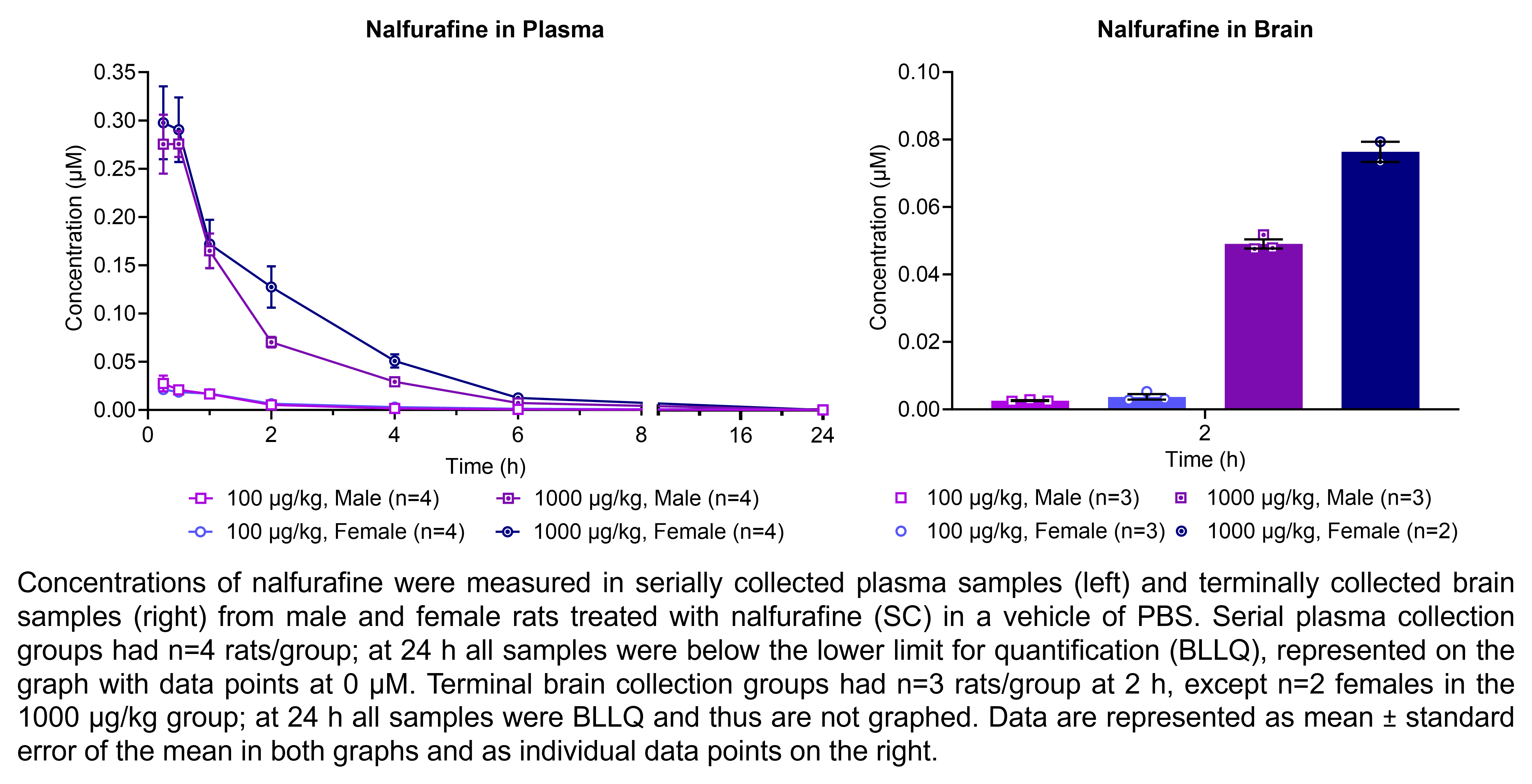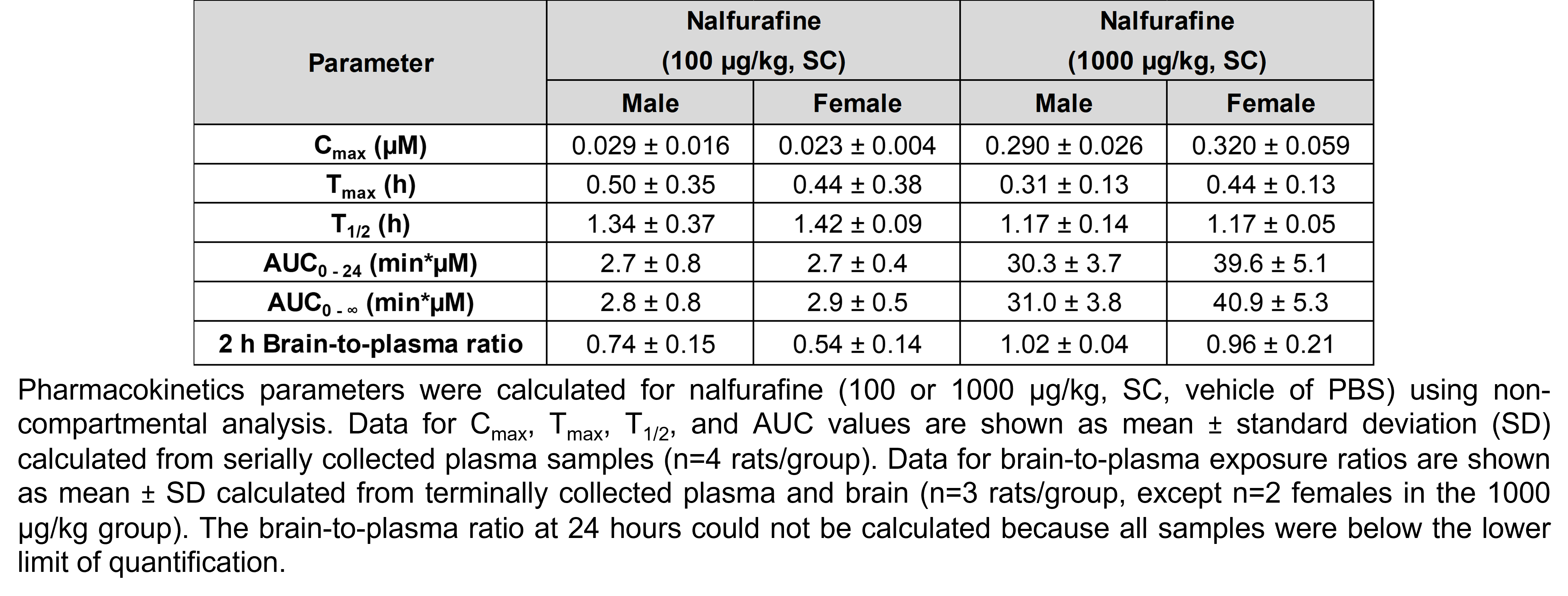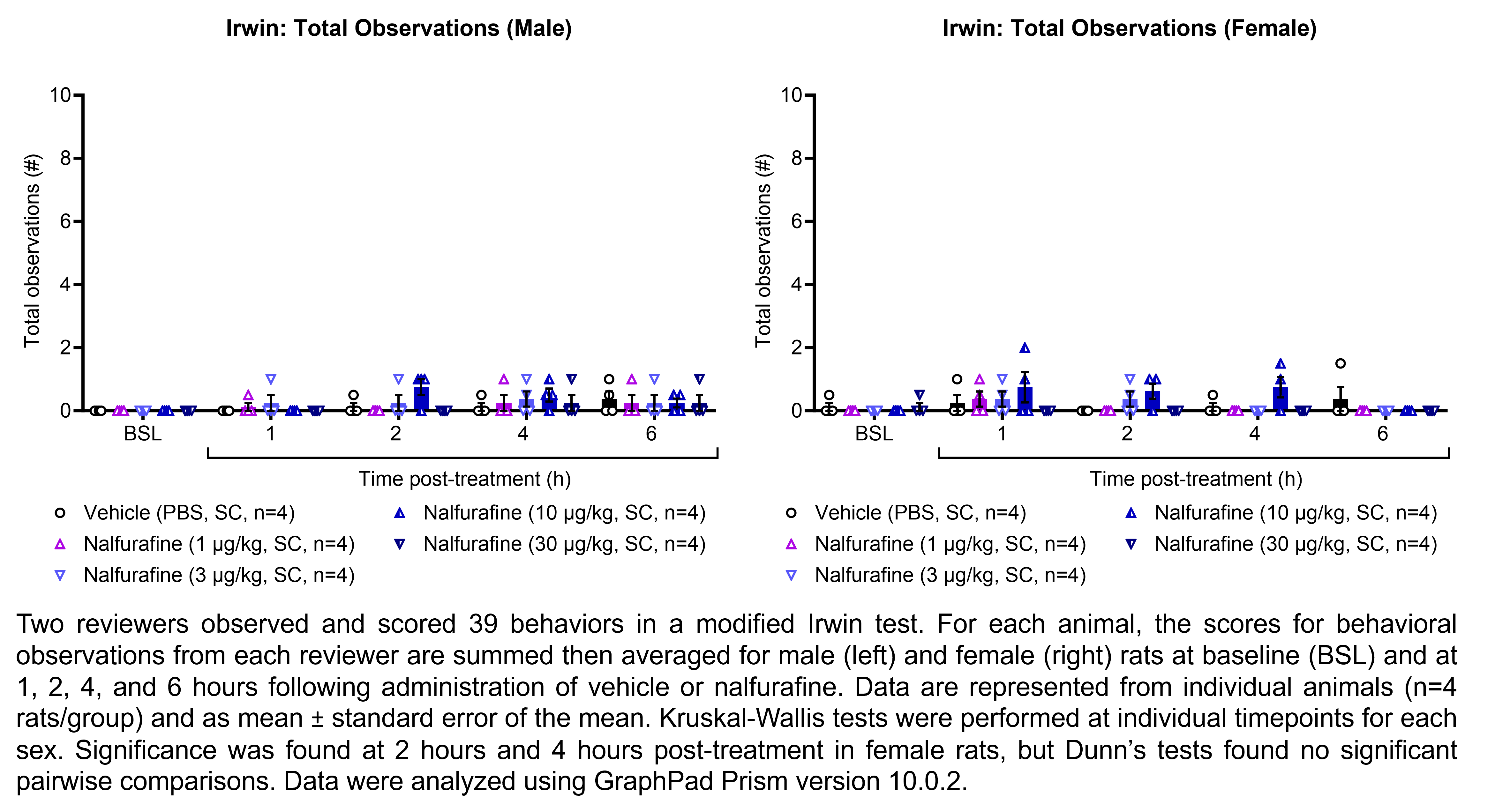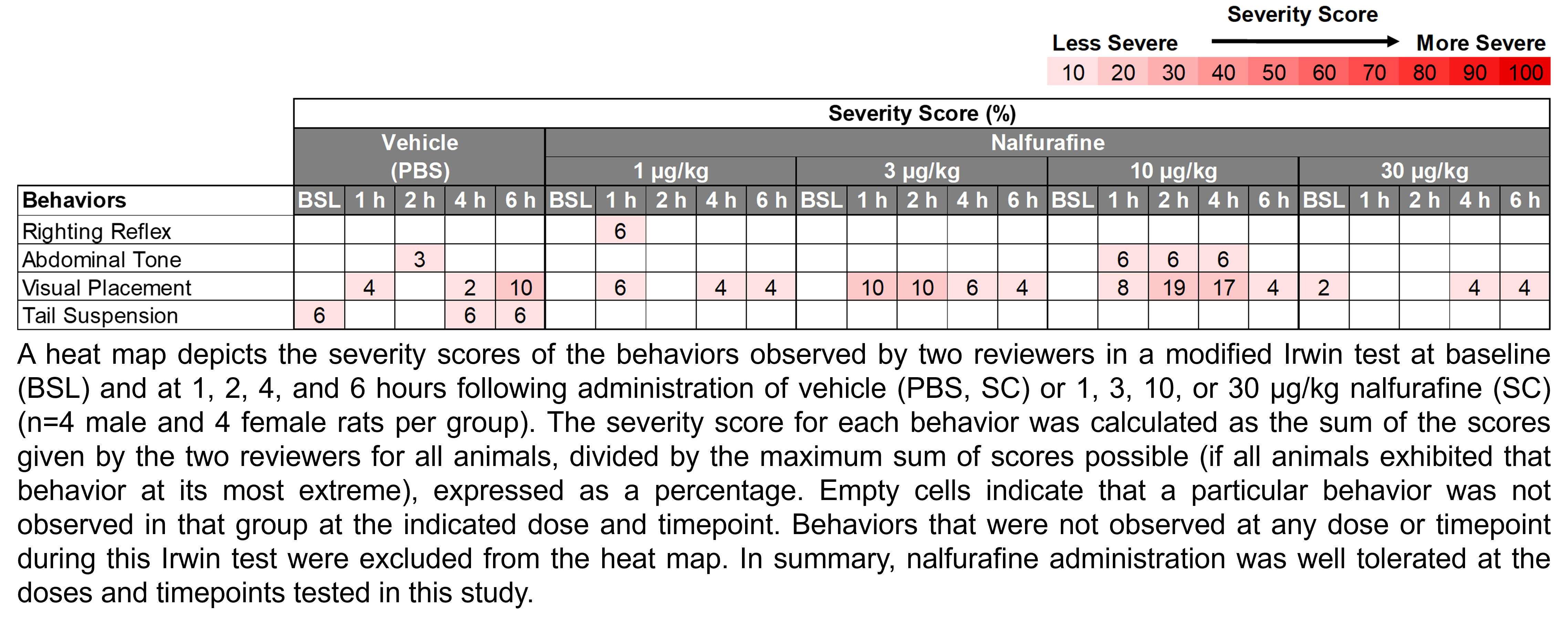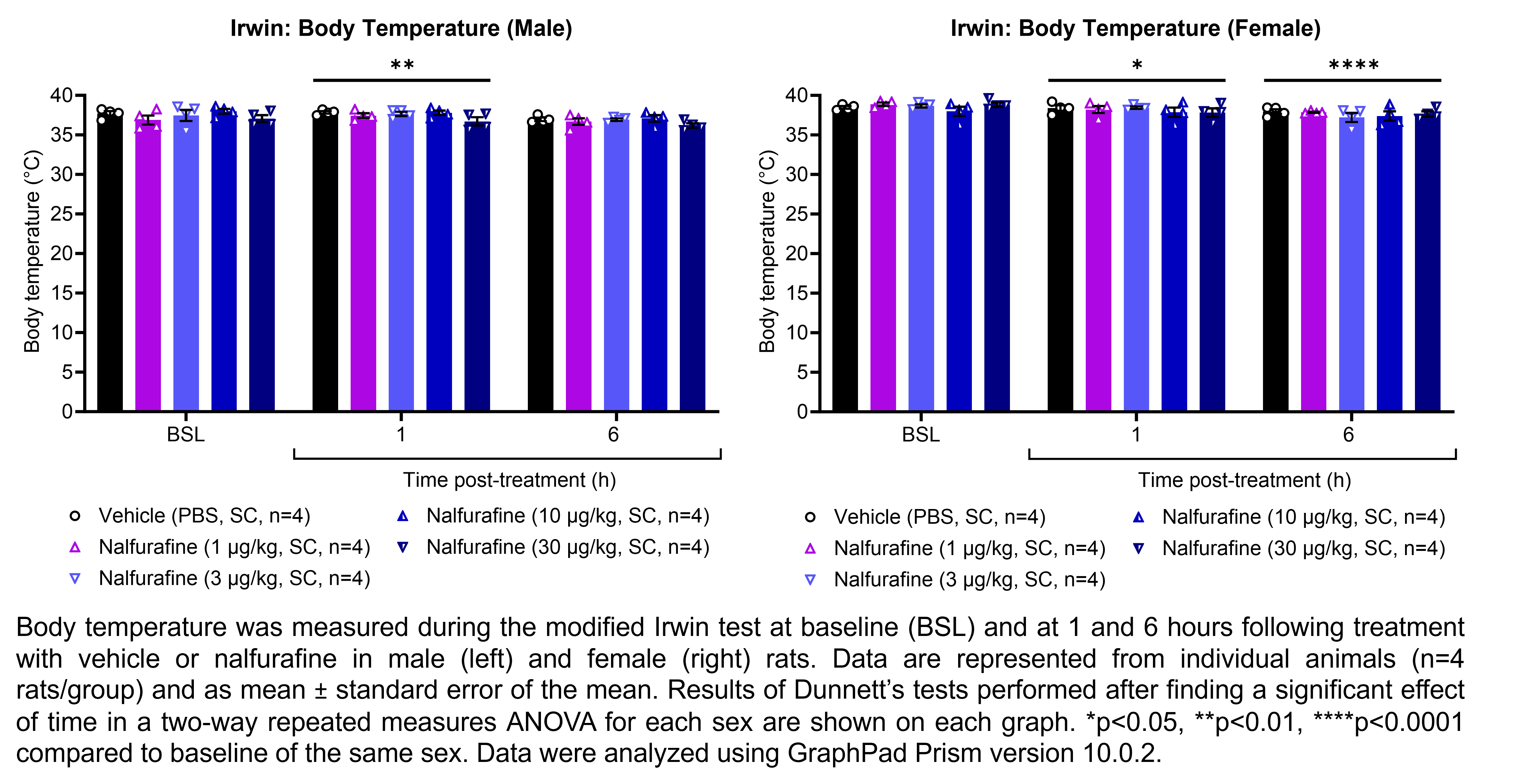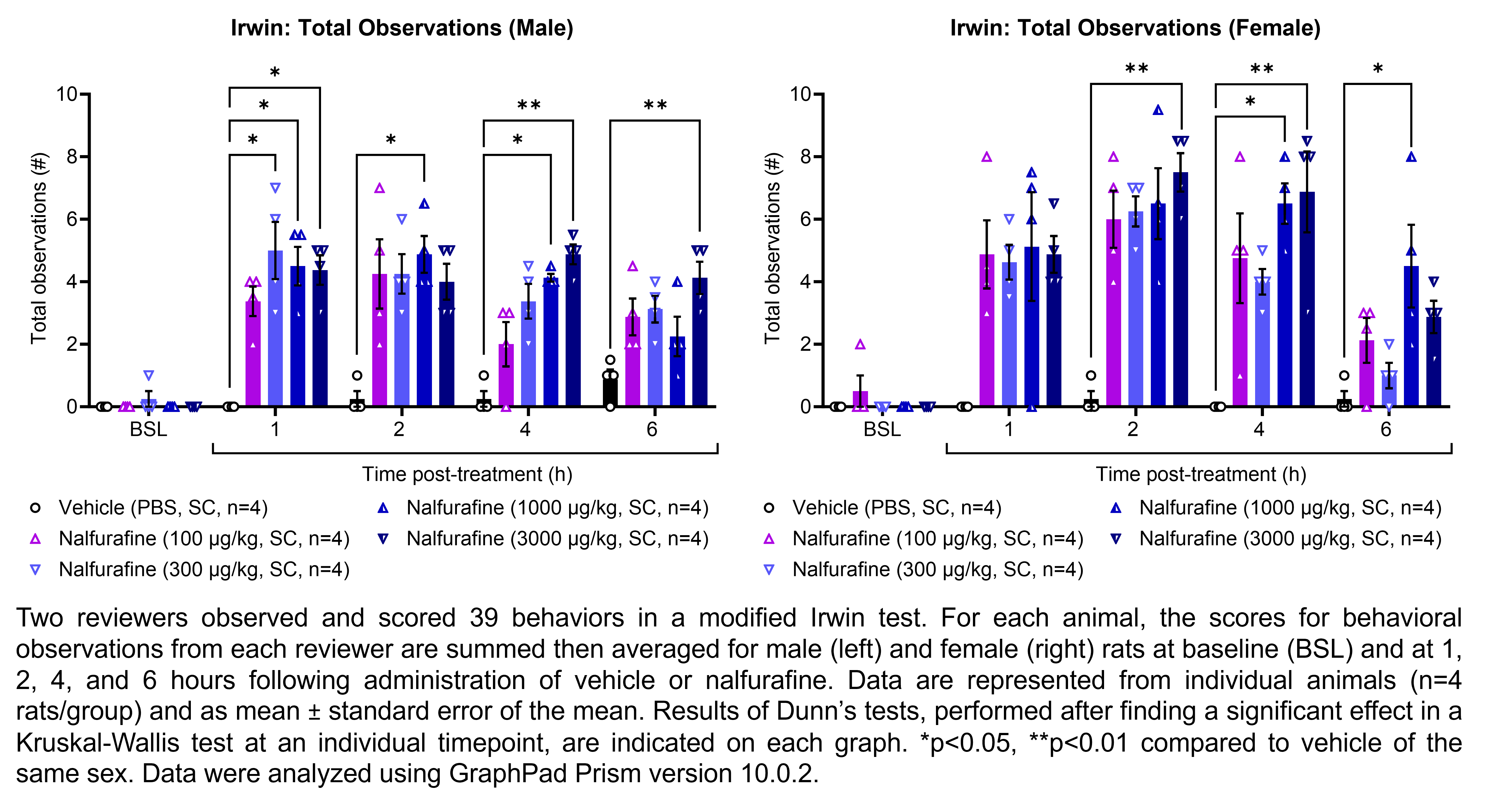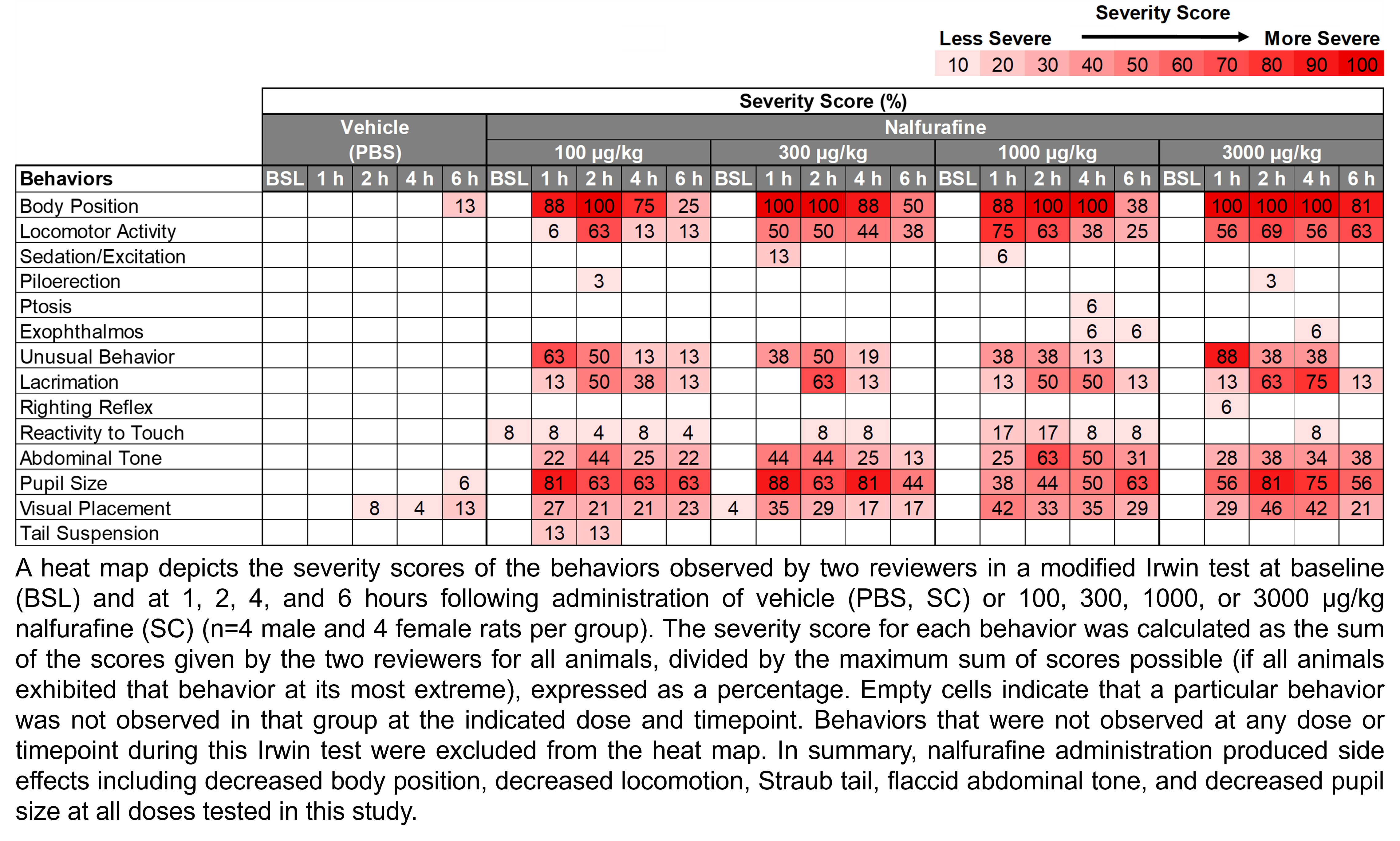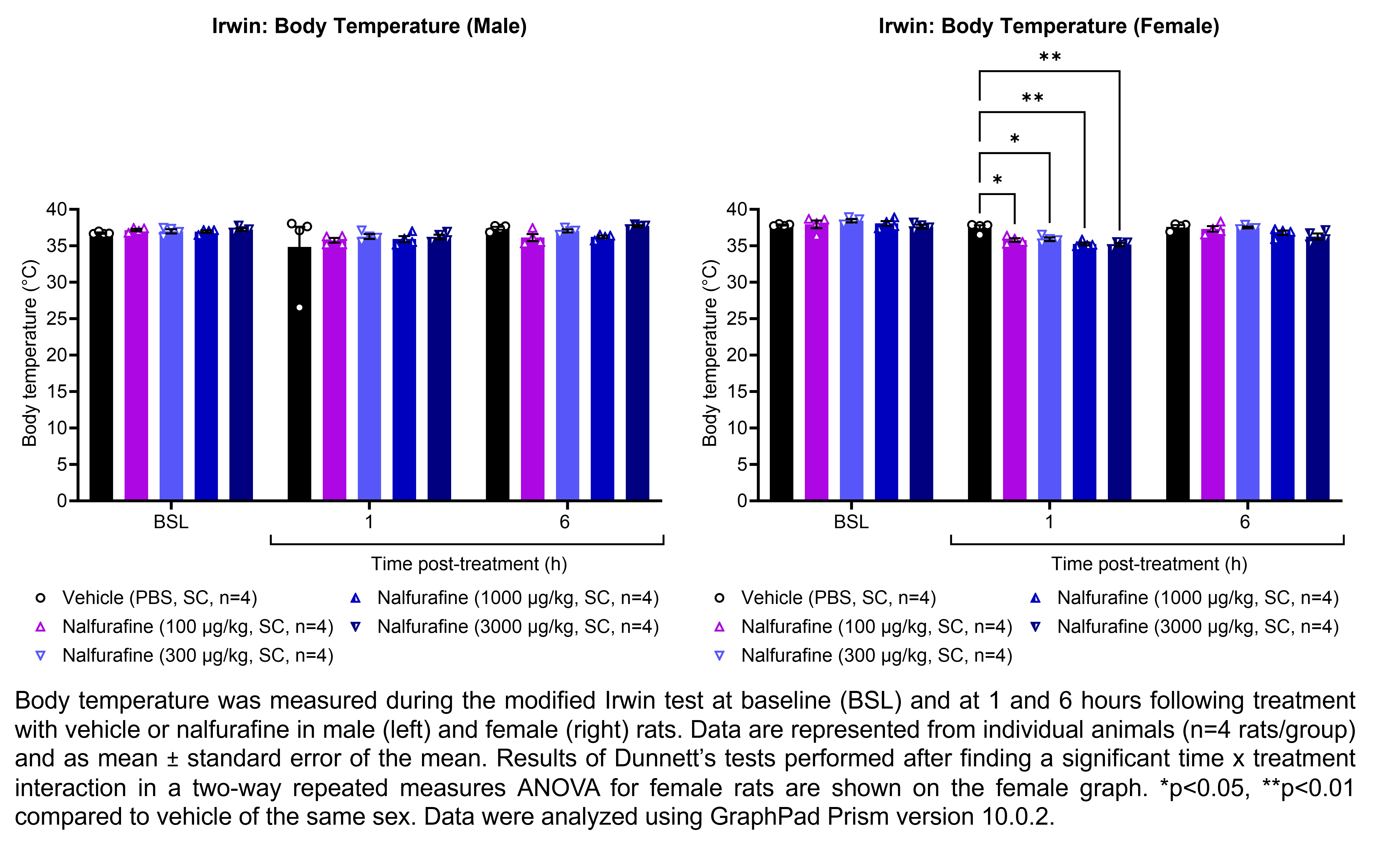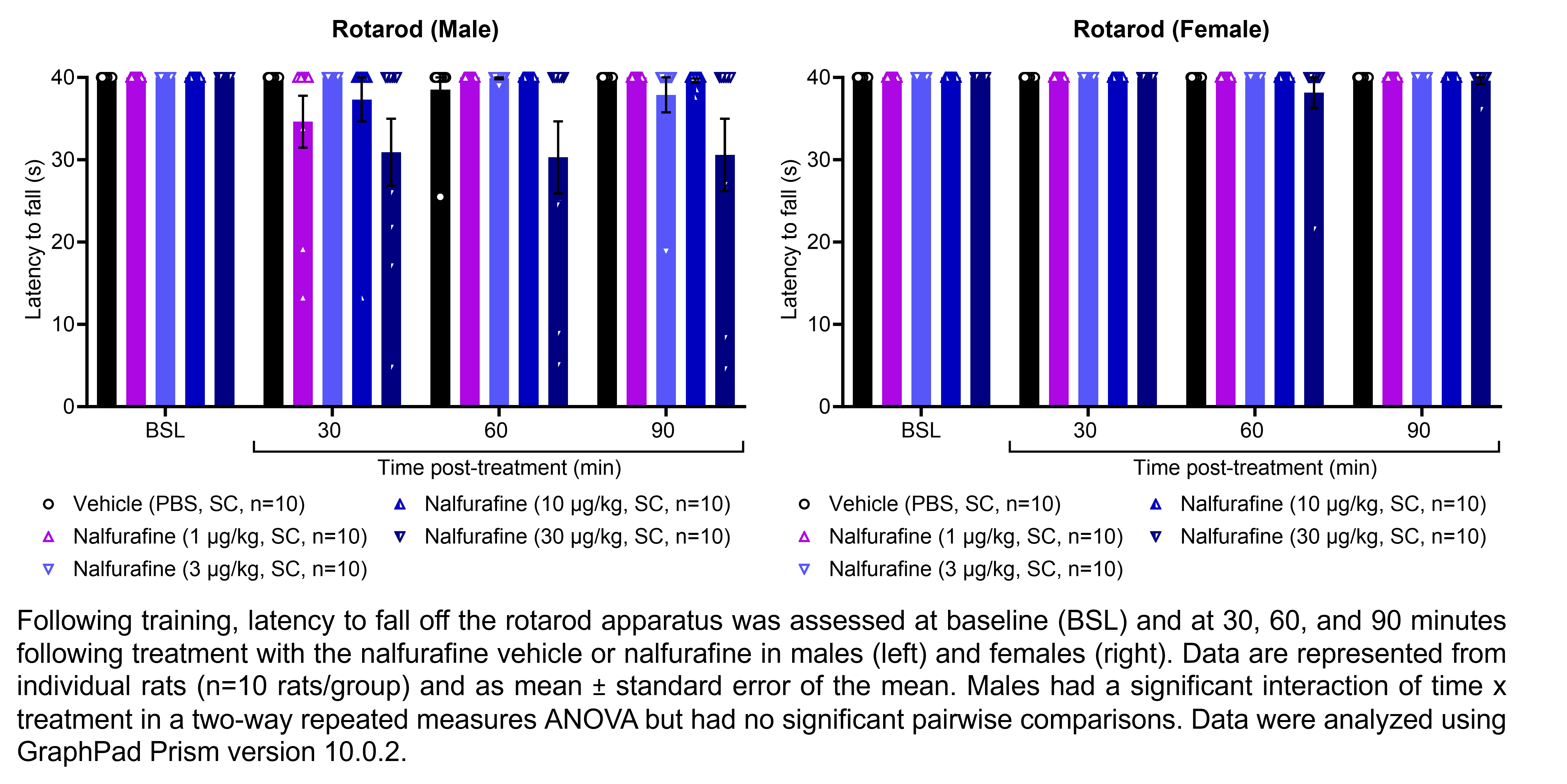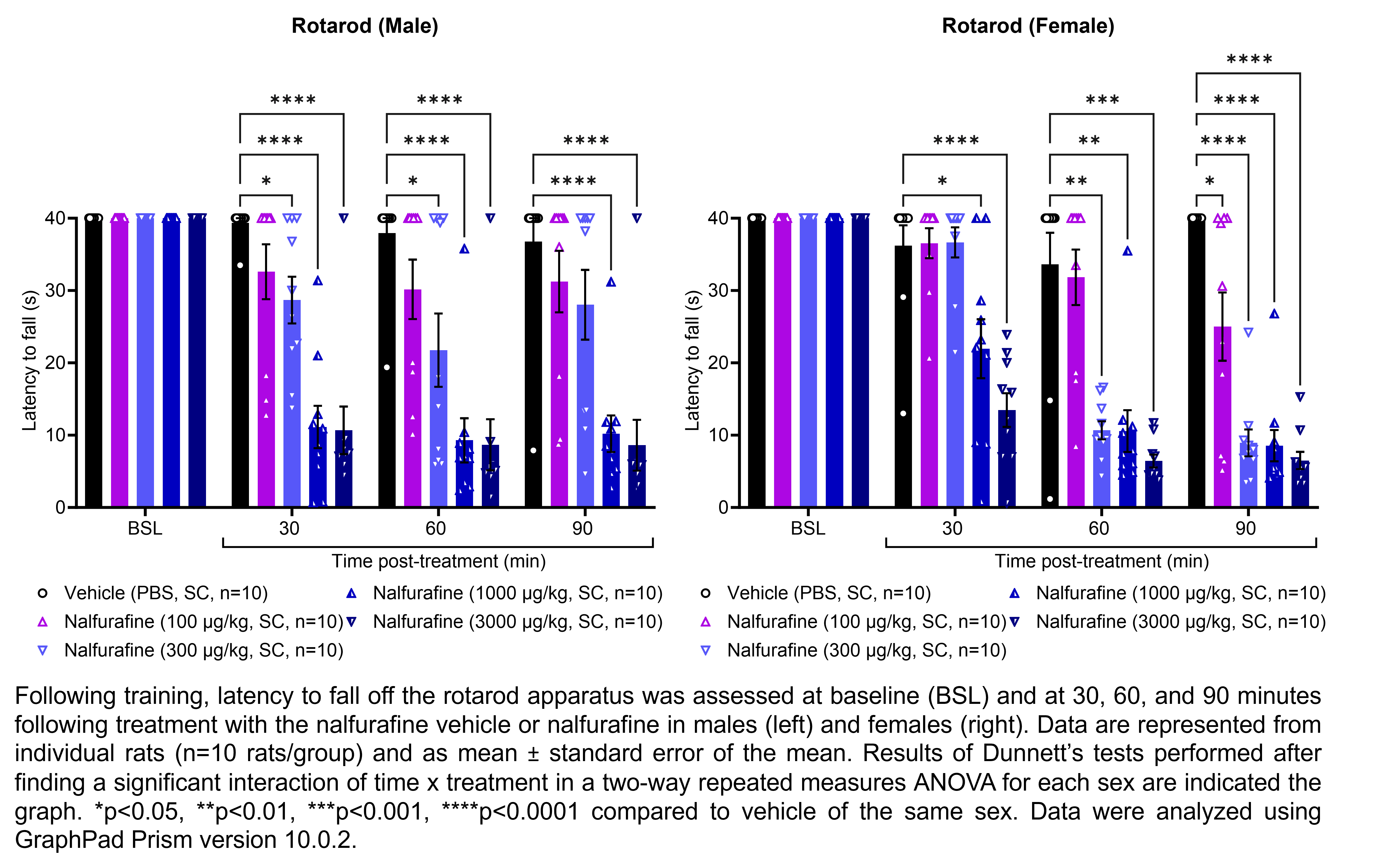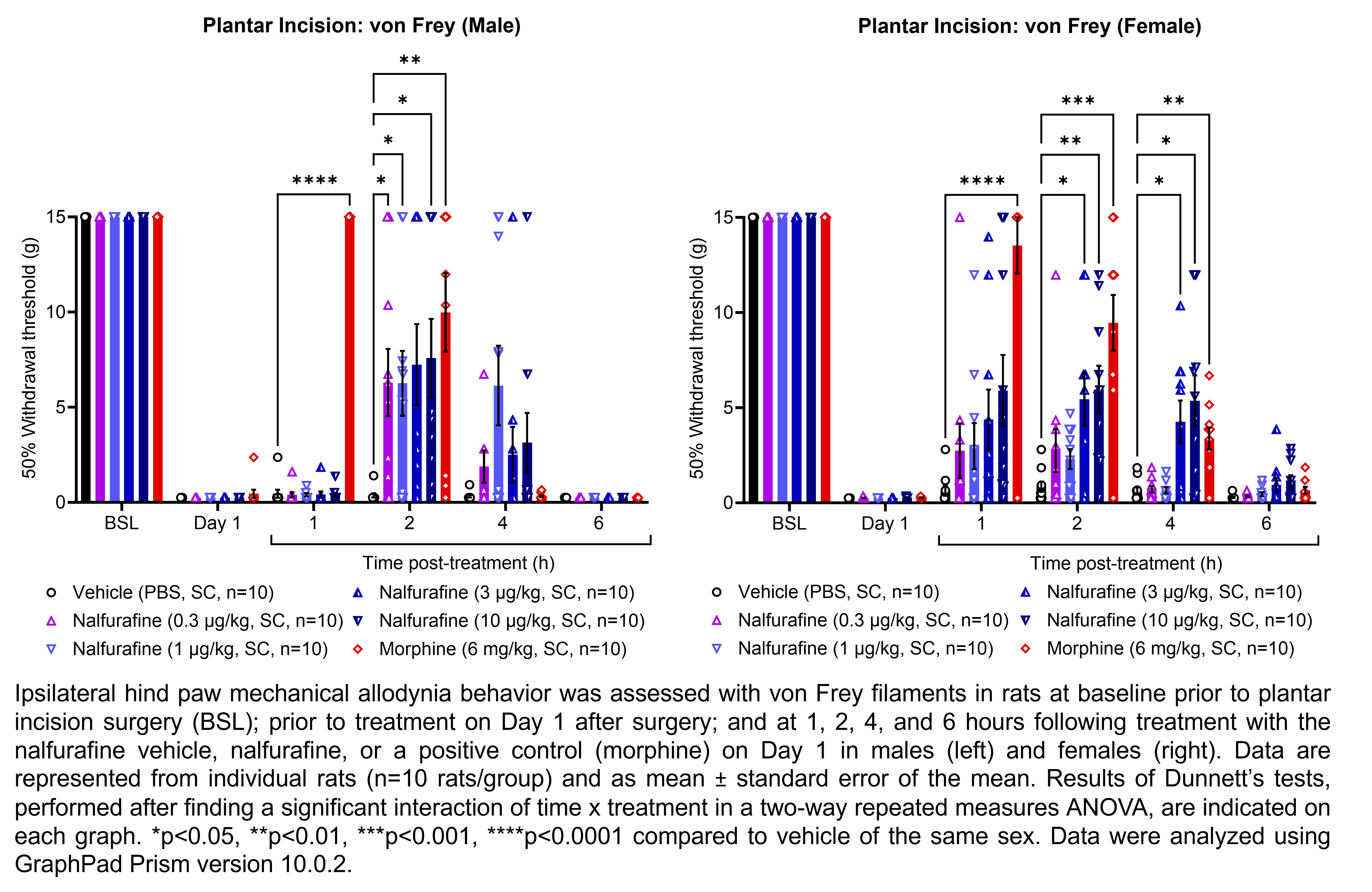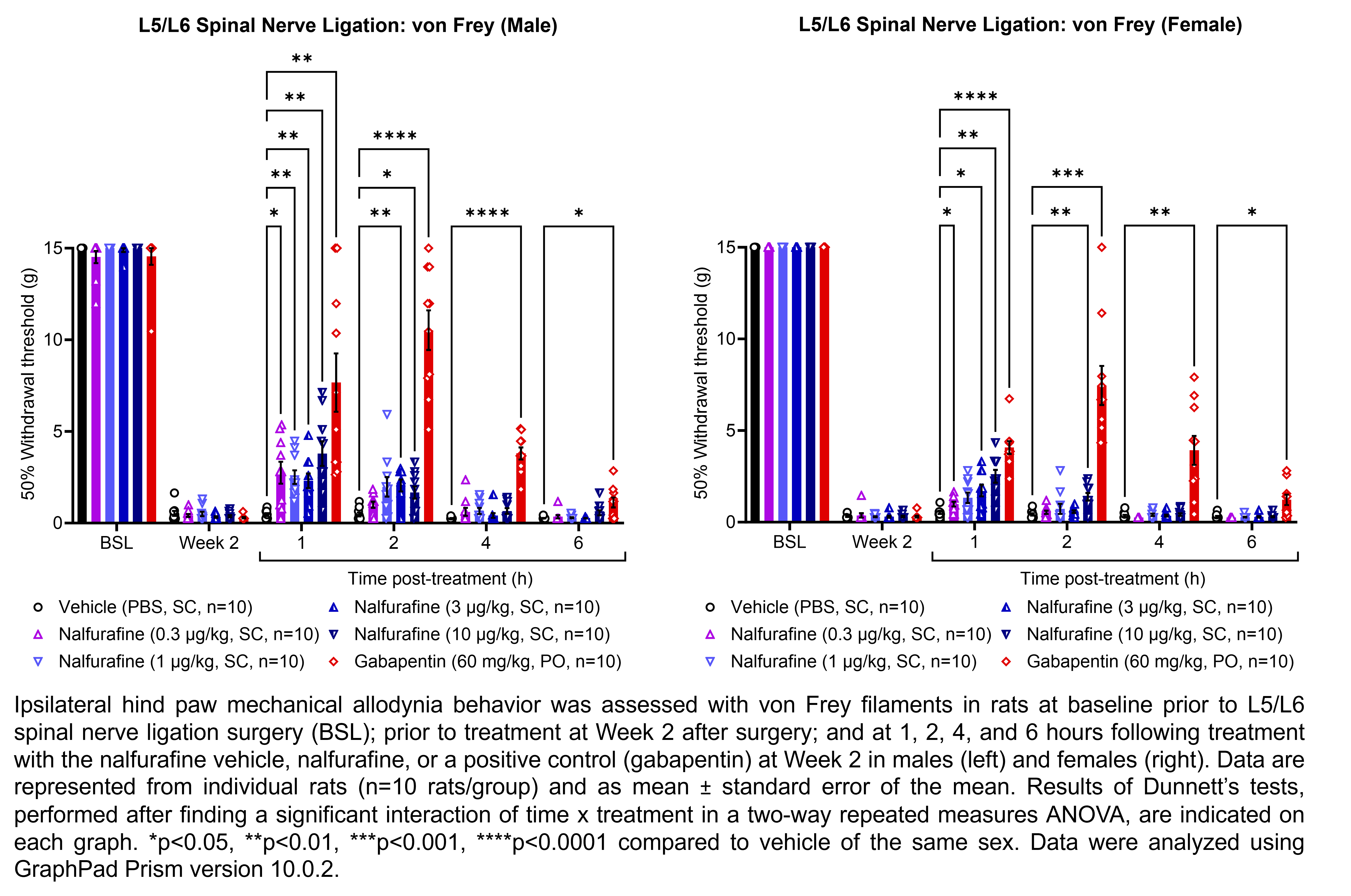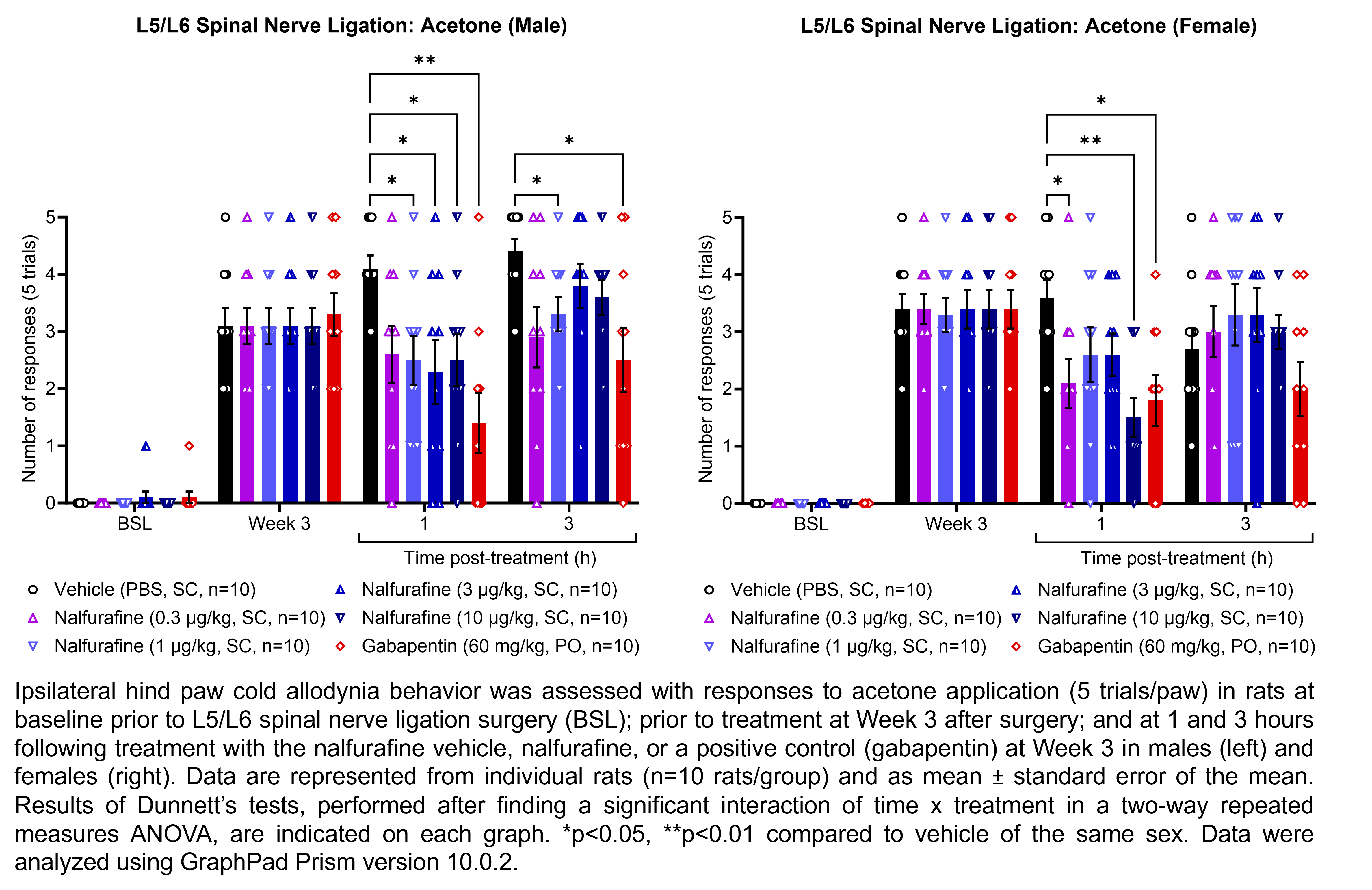NALFURAFINE
Formulation
The table below describes the formulation of nalfurafine hydrochloride and the controls morphine sulfate and gabapentin for the following in vivo experiments.
| Experiment(s) | Compound | Dose(s) | Correction factor | Dose volume mL/kg | Route | Vehicle | Suspension / Solution |
|---|---|---|---|---|---|---|---|
| Pharmacokinetics | Nalfurafine | 100, 1000 | 1.08 | 1 | SC | PBS | Solution |
| µg/kg | |||||||
| Irwin (1-30 µg/kg), | Nalfurafine | 1, 3, 10, 30 | 1.08 | 1 | SC | PBS | Solution |
| Rotarod (1-30 µg/kg) | µg/kg | ||||||
| Irwin (100-3000 µg/kg), | Nalfurafine | 100, 300, 1000, 3000 | 1.08 | 3 | SC | PBS | Solution |
| Rotarod (100-3000 µg/kg) | µg/kg | ||||||
| Plantar incision, | Nalfurafine | 0.3, 1, 3, 10 | 1.08 | 1 | SC | PBS | Solution |
| L5/L6 SNL | µg/kg | ||||||
| Plantar incision | Morphine | 6 mg/kg | 1.33 | 1 | SC | Saline | Solution |
| L5/L6 SNL | Gabapentin | 60 mg/kg | 1.00 | 1 | PO | Saline | Solution |
L5/L6 SNL = L5/L6 spinal nerve ligation; PO = per os; SC = subcutaneous; PBS = phosphate buffered saline (pH 7.2)
Results
Expand and Collapse accordion content
This work was conducted by PsychoGenics Inc. (Paramus, NJ) in collaboration with PSPP, NINDS, NIH under contract # 75N95019D00026. Prescribing information for clinically used controls can be found at labels.fda.gov. Information for icons representing experimental design details can be found through the NINDS Office of Research Quality https://go.nih.gov/Yw2tHGI.



